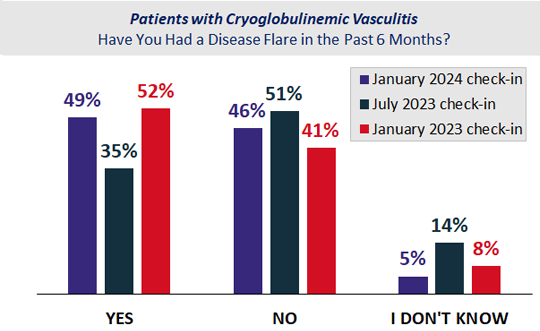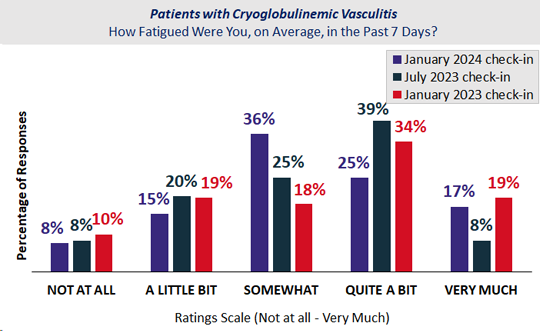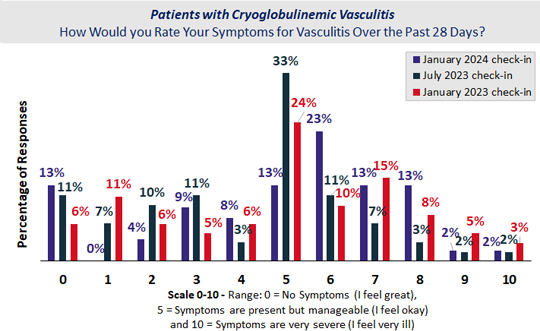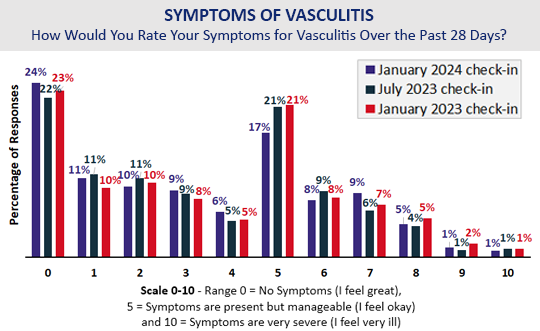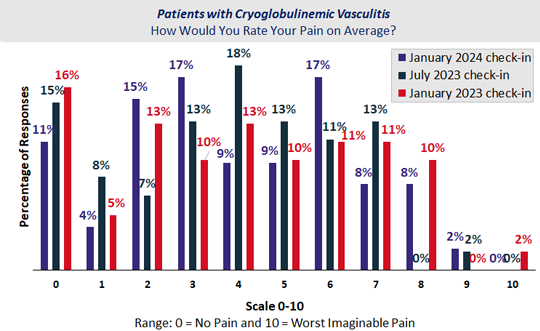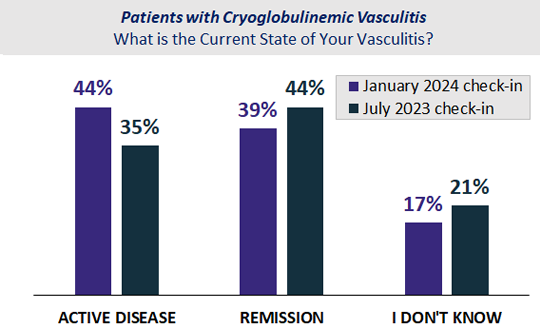VPPRN Patient-Powered Research
Cryoglobulinemic Vasculitis (Cryoglobulinemia)
Every 6 months, we ask our VPPRN community to check-in and tell us how they are doing. The graphs below reflect the scores/ratings of patients with cryoglobulinemic vasculitis (cryoglobulinemia) compared to the Network as a whole. Here is what we learned about flares, fatigue, pain, symptoms of vasculitis, and members’ current state of vasculitis at the January 2024 check-in:
- Compared to patients with other forms of vasculitis, patients with cryoglobulinemic vasculitis reported the following:
- more flares
- higher scores for fatigue
- higher scores/ratings for their symptoms of vasculitis over the past 28 days
- higher scores for pain
- a higher percentage of patients with cryoglobulinemic vasculitis reported their vasculitis as active.
- Compared to patients with other forms of vasculitis, patients with cryoglobulinemic vasculitis reported the following:
If you have concerns about your health scores, please discuss with your rheumatologist or primary care provider.
SYMPTOMS of VASCULITIS
Symptoms of Vasculitis: Patients with cryoglobulinemic vasculitis scored their symptoms of vasculitis higher over the past 28 days at the January 2024 check-in. 13% of patients with cryoglobulinemic vasculitis reported no symptoms of vasculitis compared to 24% in the VPPRN community.
PAIN and VASCULITIS
Pain: Patients with cryoglobulinemic vasculitis reported more pain on average at the January 2024 check-in. 11% of patients with cryoglobulinemic vasculitis reported no pain. This is less than the 27% in the VPPRN community.
MEMBERS' CURRENT STATE OF VASCULITIS
Members’ Current State of Vasculitis: At the January 2024 check-in, 44% of patients with cryoglobulinemic vasculitis reported their vasculitis as active. This is higher than the 25% reported in the Network.


